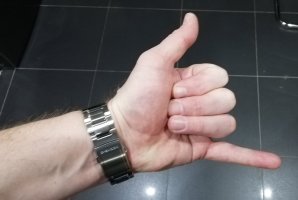What Is Tinder, & What Is Kindling?
What is Tinder, & What is Kindling?
Please note that what I am talking about here is traditional materials, materials used in the making of fire with Flint, Steel & Tinderbox. ( I am NOT in any way referring to materials used in the making of fire using the modern ferocerium rod ).
TINDER.
Tinder is a plant material that will catch & hold a spark from flint & steel. It can also be used to transfer an ember from the fire-board of a fire-bow. The dust created during the function of a fire-bow is also tinder.





KINDLING.
Kindling is the material that actually takes fire when brought in contact with smouldering tinder. Dried grass, teased Stringybark bark, coconut fibre, teased natural rope, a birds nest made of fine natural materials often including the aforementioned plant materials. Kindling is also small twigs & sticks used in the initial making of fire.
The so called “tinder nest” is NOT tinder in the true sense of the word, it is kindling. Fat wood/candlewood is NOT tinder in the true sense of the word, it is kindling. Neither of these plant materials will catch & hold a spark struck from flint & steel.


This article taken from: https://woodsrunnersdiary.blogspot.com/2011/05/what-is-tinder-what-is-kindling.html
Keith.
What is Tinder, & What is Kindling?
Please note that what I am talking about here is traditional materials, materials used in the making of fire with Flint, Steel & Tinderbox. ( I am NOT in any way referring to materials used in the making of fire using the modern ferocerium rod ).
TINDER.
Tinder is a plant material that will catch & hold a spark from flint & steel. It can also be used to transfer an ember from the fire-board of a fire-bow. The dust created during the function of a fire-bow is also tinder.

KINDLING.
Kindling is the material that actually takes fire when brought in contact with smouldering tinder. Dried grass, teased Stringybark bark, coconut fibre, teased natural rope, a birds nest made of fine natural materials often including the aforementioned plant materials. Kindling is also small twigs & sticks used in the initial making of fire.
The so called “tinder nest” is NOT tinder in the true sense of the word, it is kindling. Fat wood/candlewood is NOT tinder in the true sense of the word, it is kindling. Neither of these plant materials will catch & hold a spark struck from flint & steel.
This article taken from: https://woodsrunnersdiary.blogspot.com/2011/05/what-is-tinder-what-is-kindling.html
Keith.

